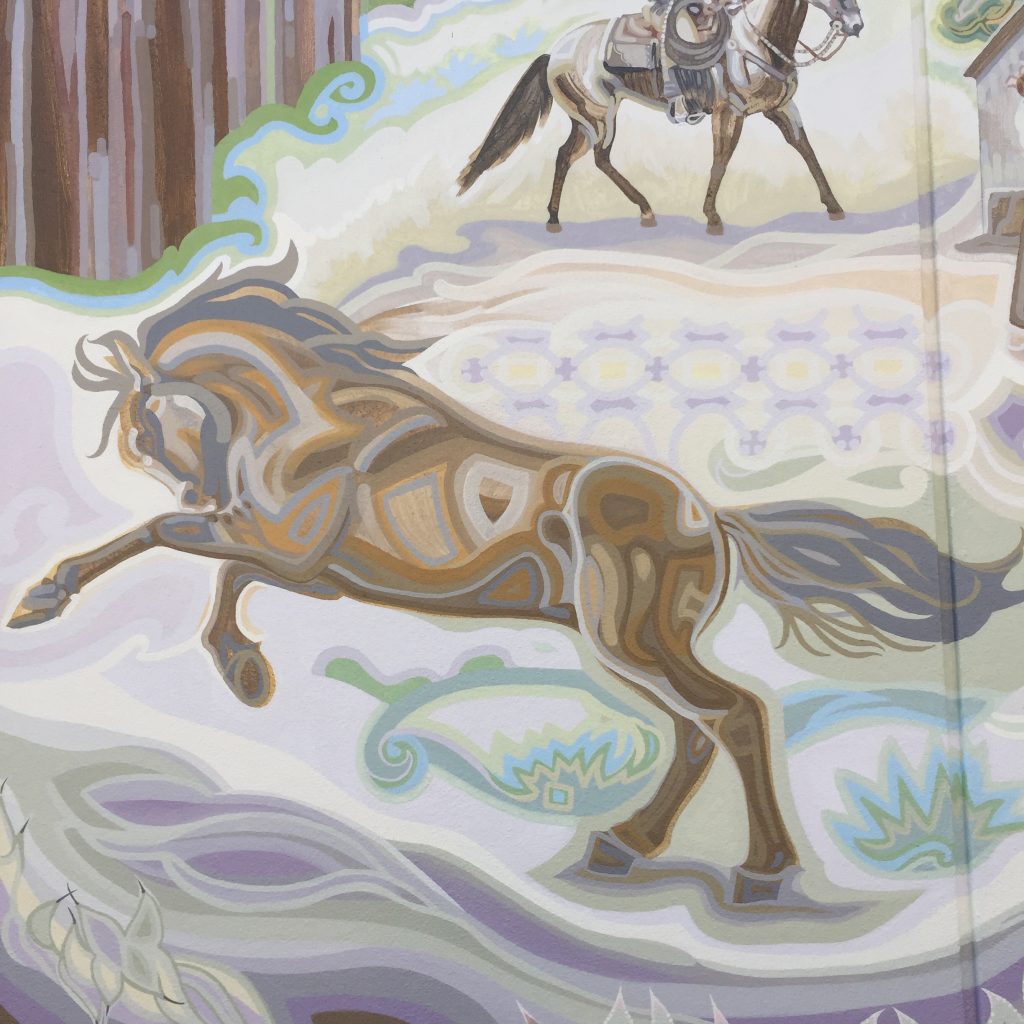


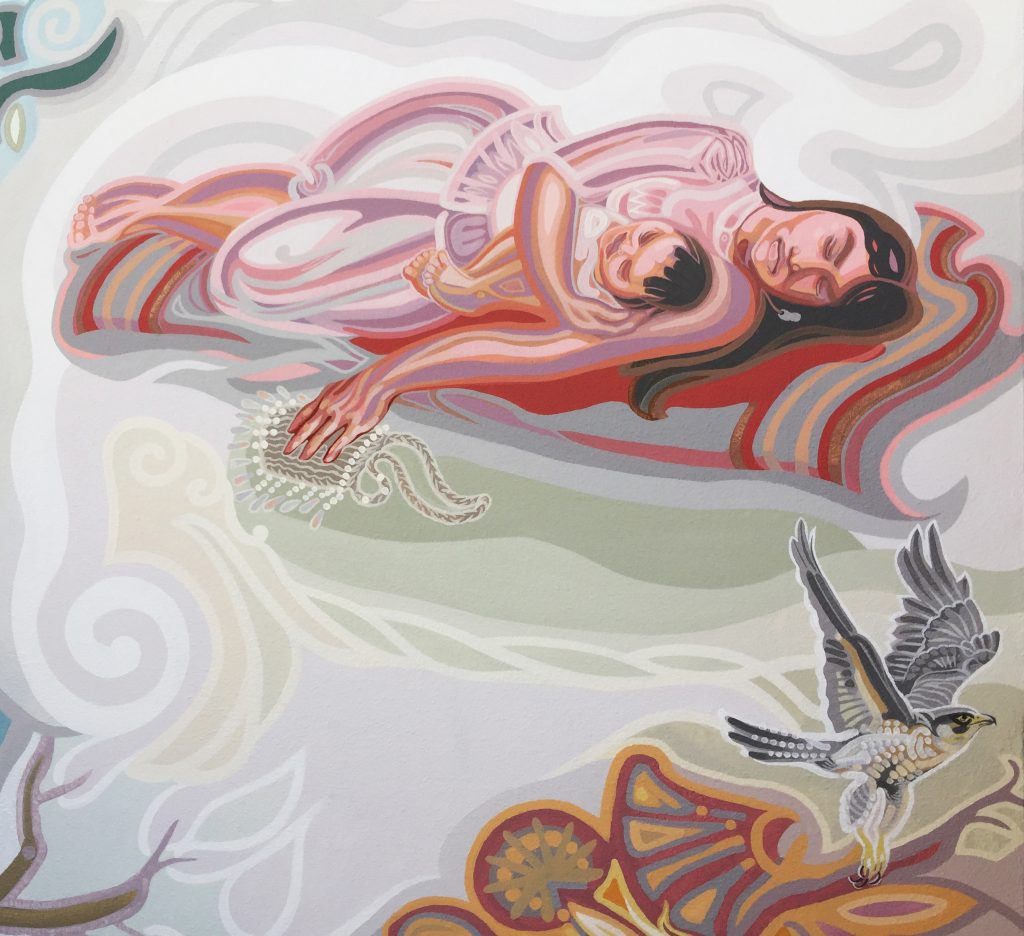
Panel summaries:
Click on the list or scroll down for the quick view.
After each summary, a PANEL BUTTON links to all the stories and portraits of real people in that panel.
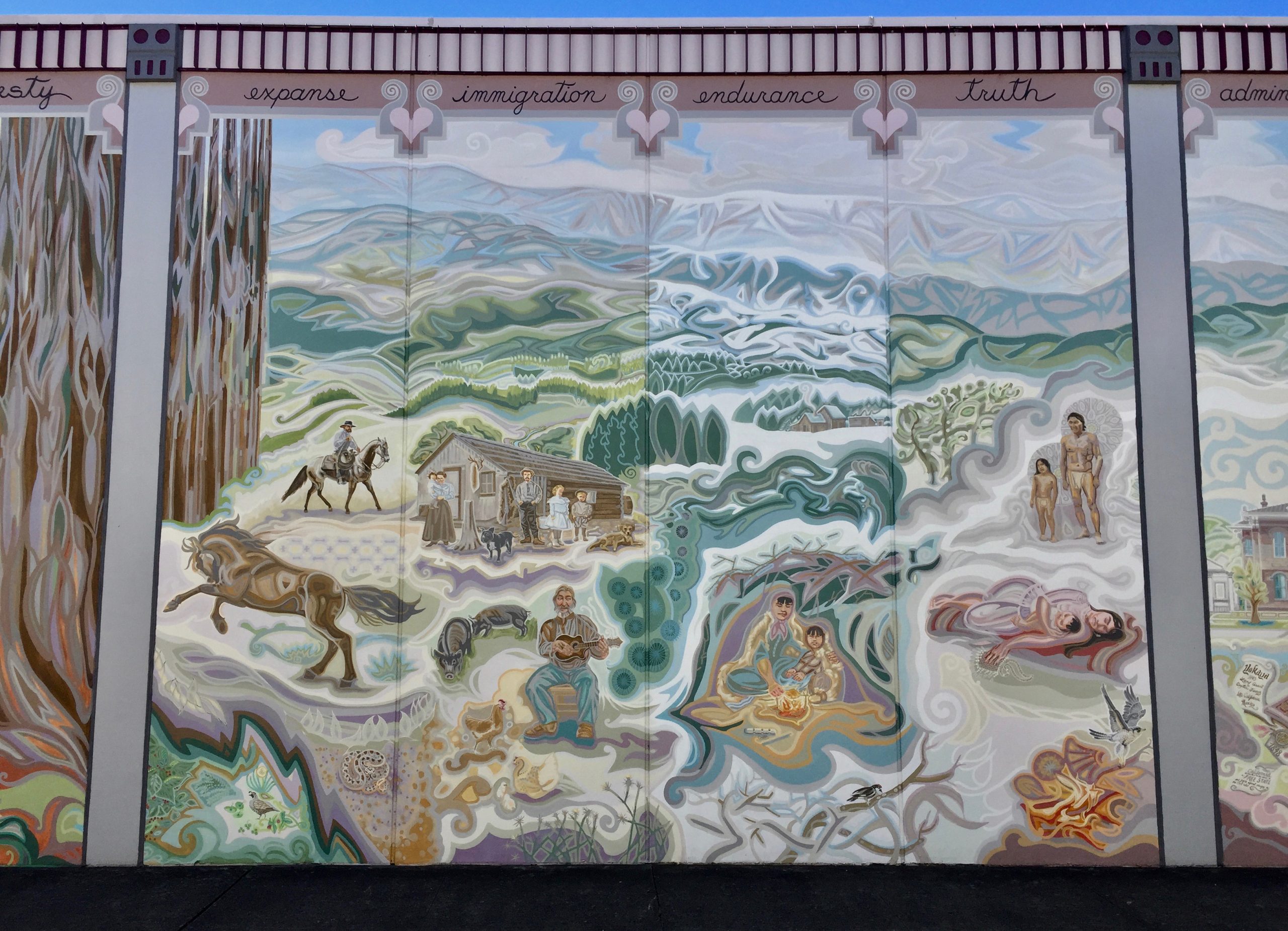
SECTION TWO represents our region as it changed drastically during the 1800s with colonization by Spain, then Mexico, and mass immigration after it became part of the United States.
panel 6 expanse

Huge ranchos with herds of cattle were cared for by small groups of European immigrants with Native labor. Native people soon became highly skilled vaqueros.
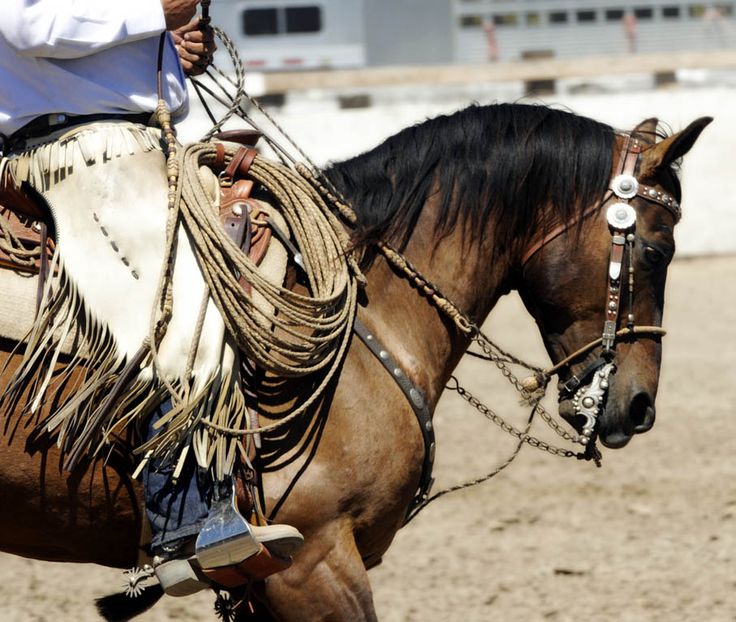
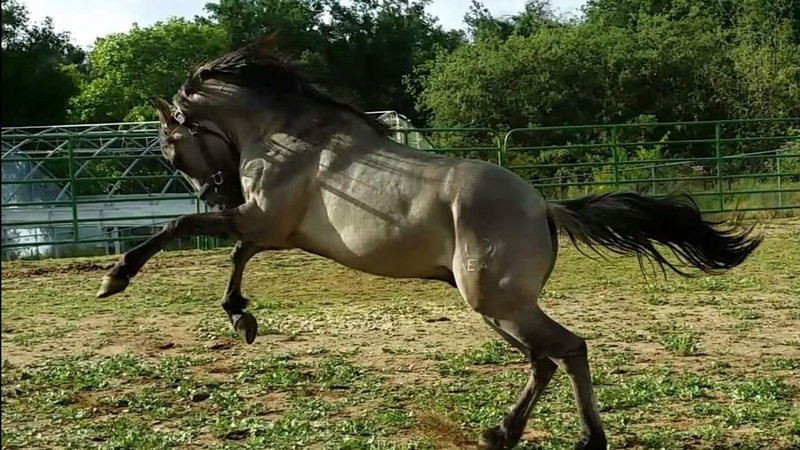
The two land grants in Mendocino County were in Ukiah and Hopland. The idea of the title of this panel is that incursion of people from Europe and Mexico was beginning, but the numbers were small while the land was big. In other words, there was still room for Natives and colonists to coexist.

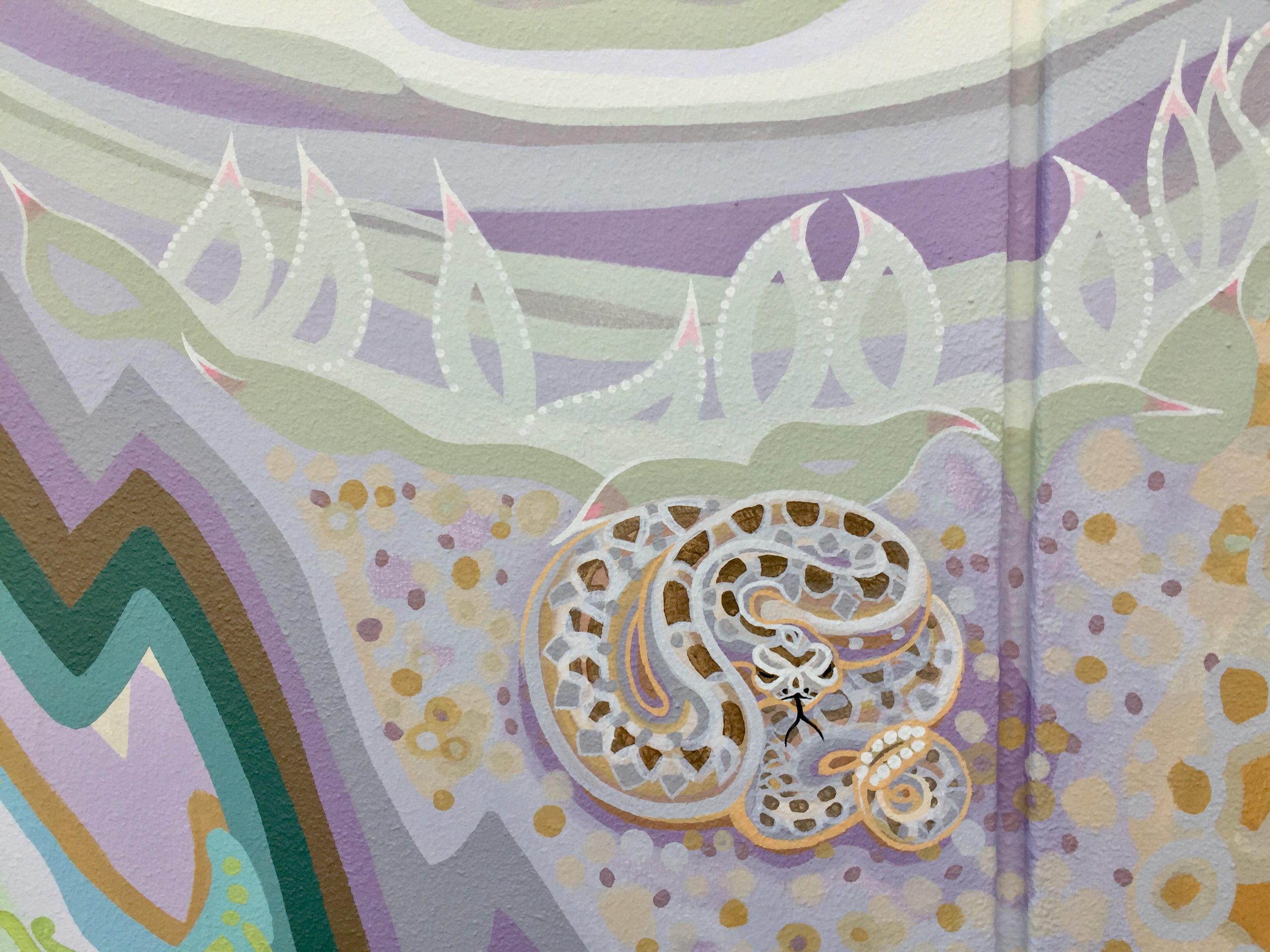
Yet the landscape was changing with the herds of cattle who ate what wild elk and deer were also depending on. The jagged line represents the break between prosperity and scarcity for Native people.
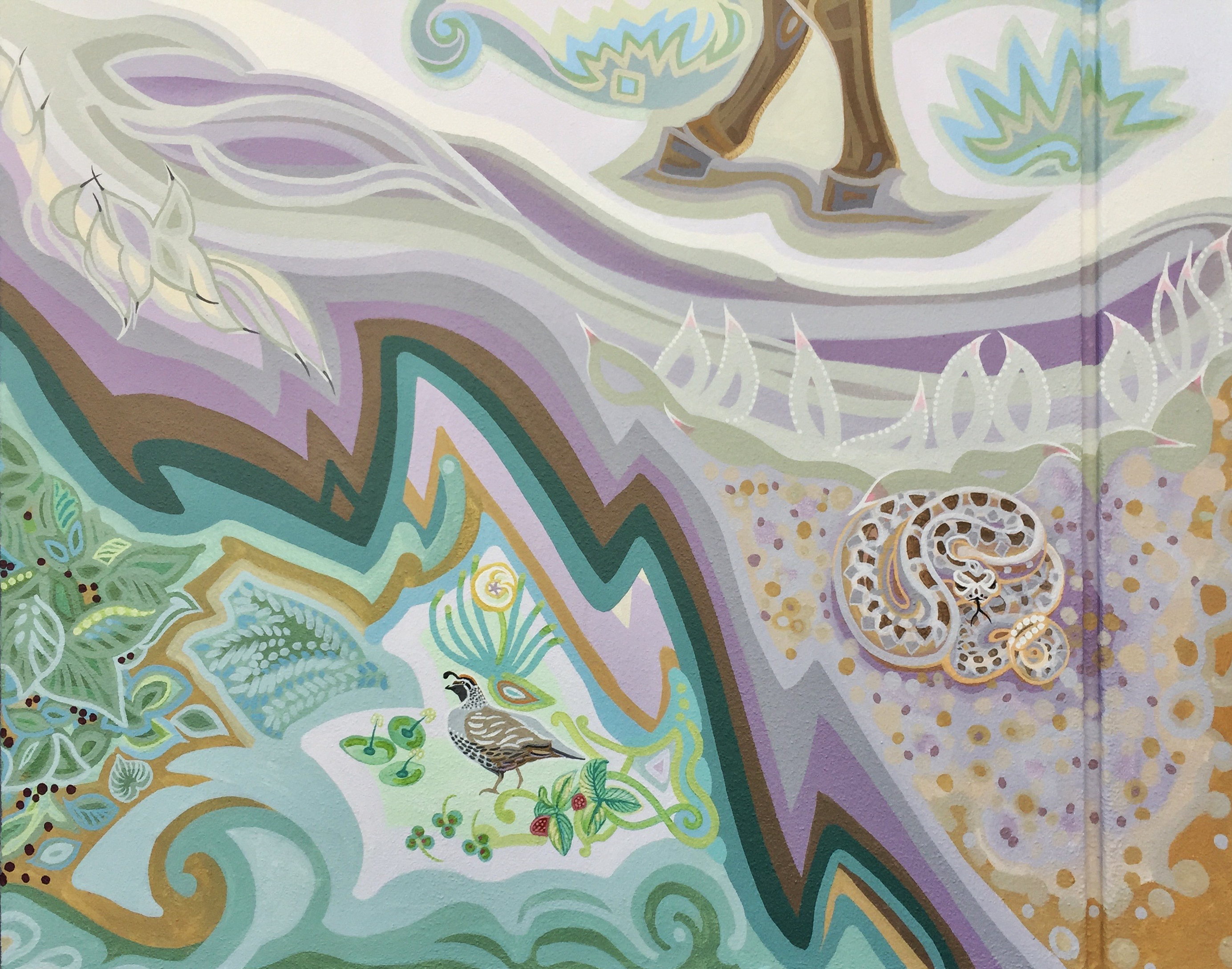
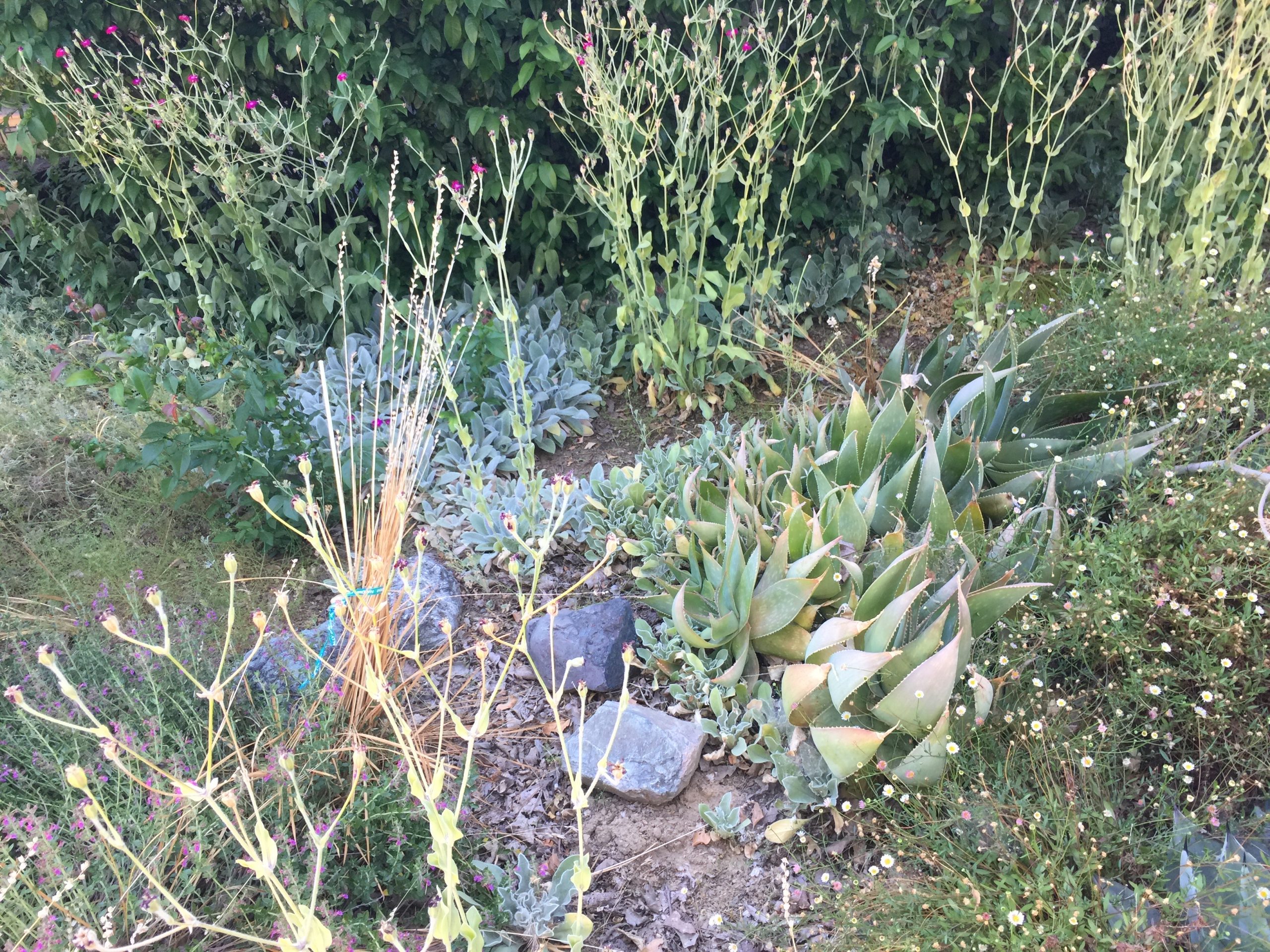
In the “land of plenty” every plant is edible along with a healthy quail. On the harsh side of the divide are spiky succulents and a rattlesnake in a dry land.
Find all the stories on the panel page:
panel 7 immigration
The end of the Mexican-American War (1846 – 1848) brought California into the United States. Immediately, European/American settlers come to California in great numbers with the Gold Rush.
This was the largest mass migration in American history.

The upper part of the scene shows a family on their homestead.
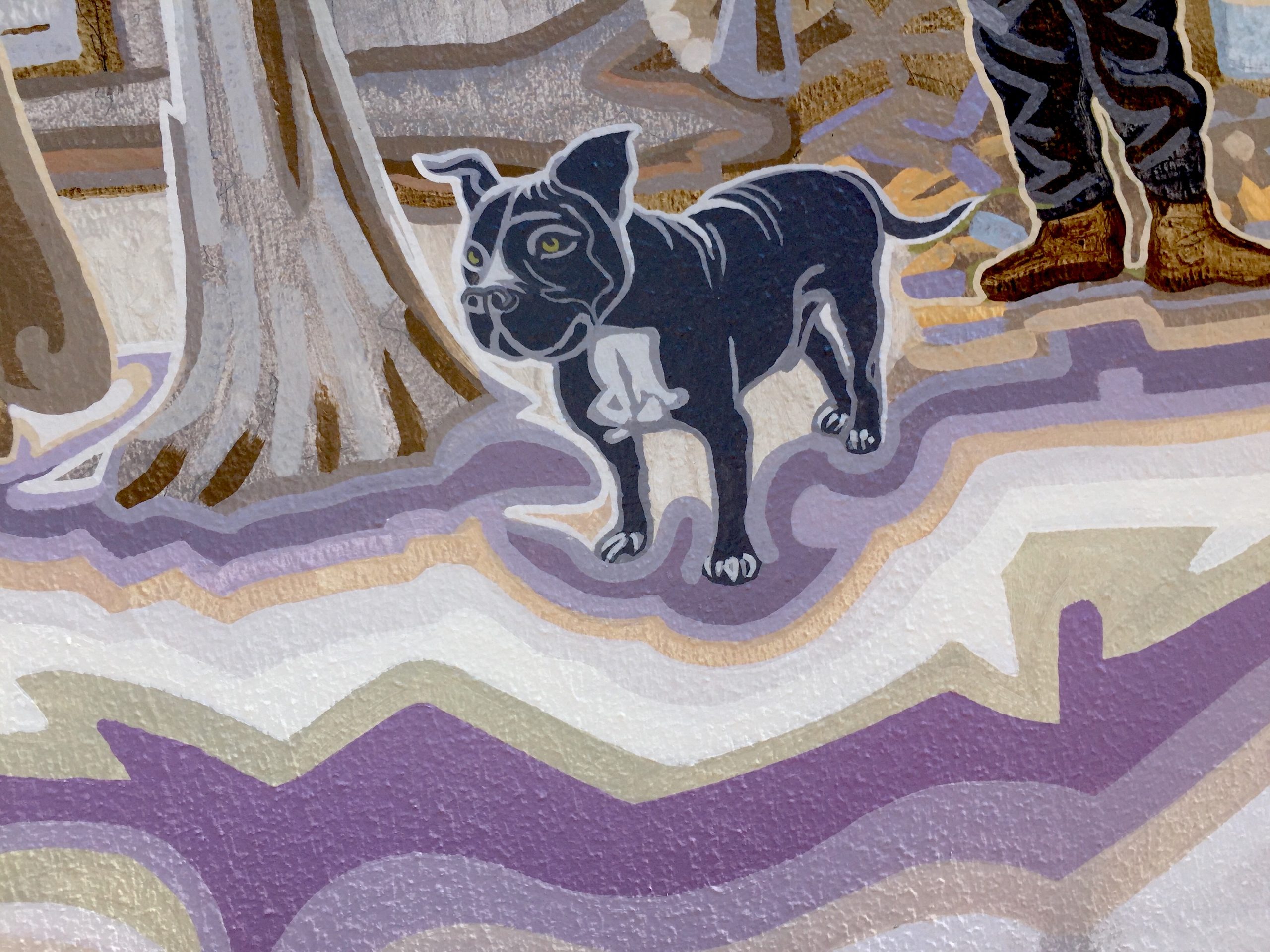
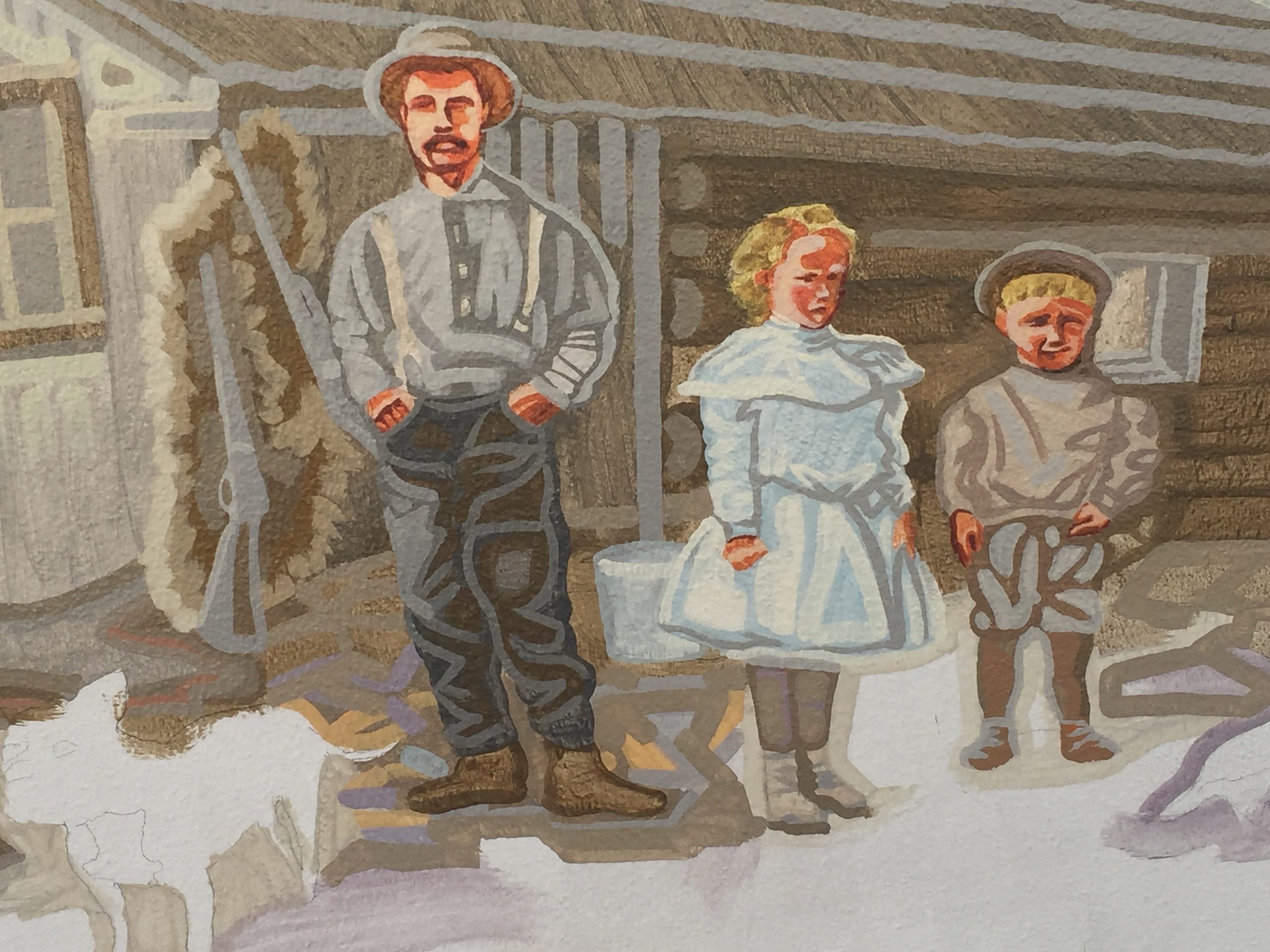
People flocked to California to strike it rich. Most didn’t, but most also stayed, for the land and for the ways they could sell meat, crops, other provisions, and provide services to all the newcomers crowding into every part of the state.
Find all the stories on the panel page:
panel 8 endurance
Settlers coming to California rushed into land that wasn’t empty.
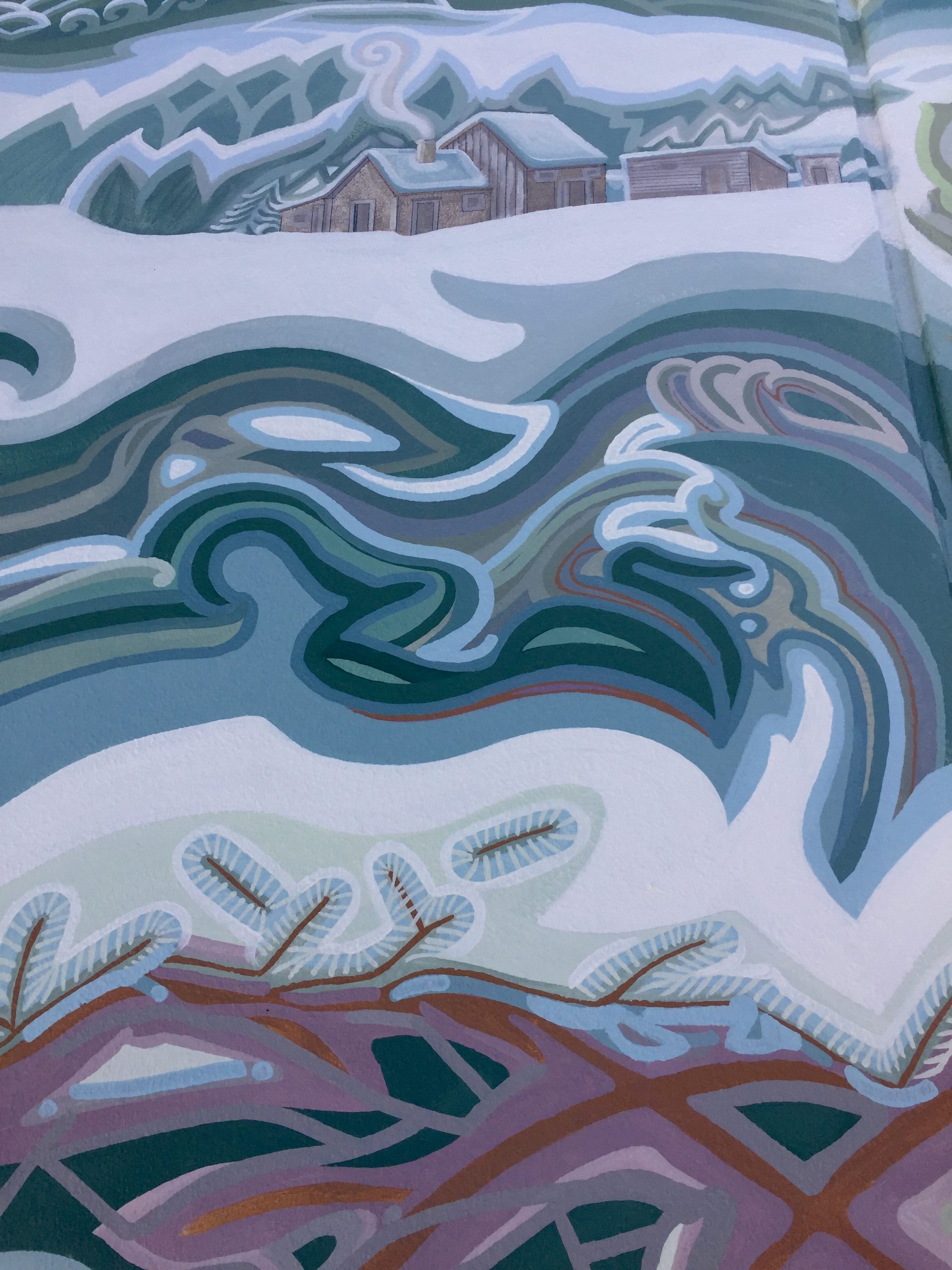
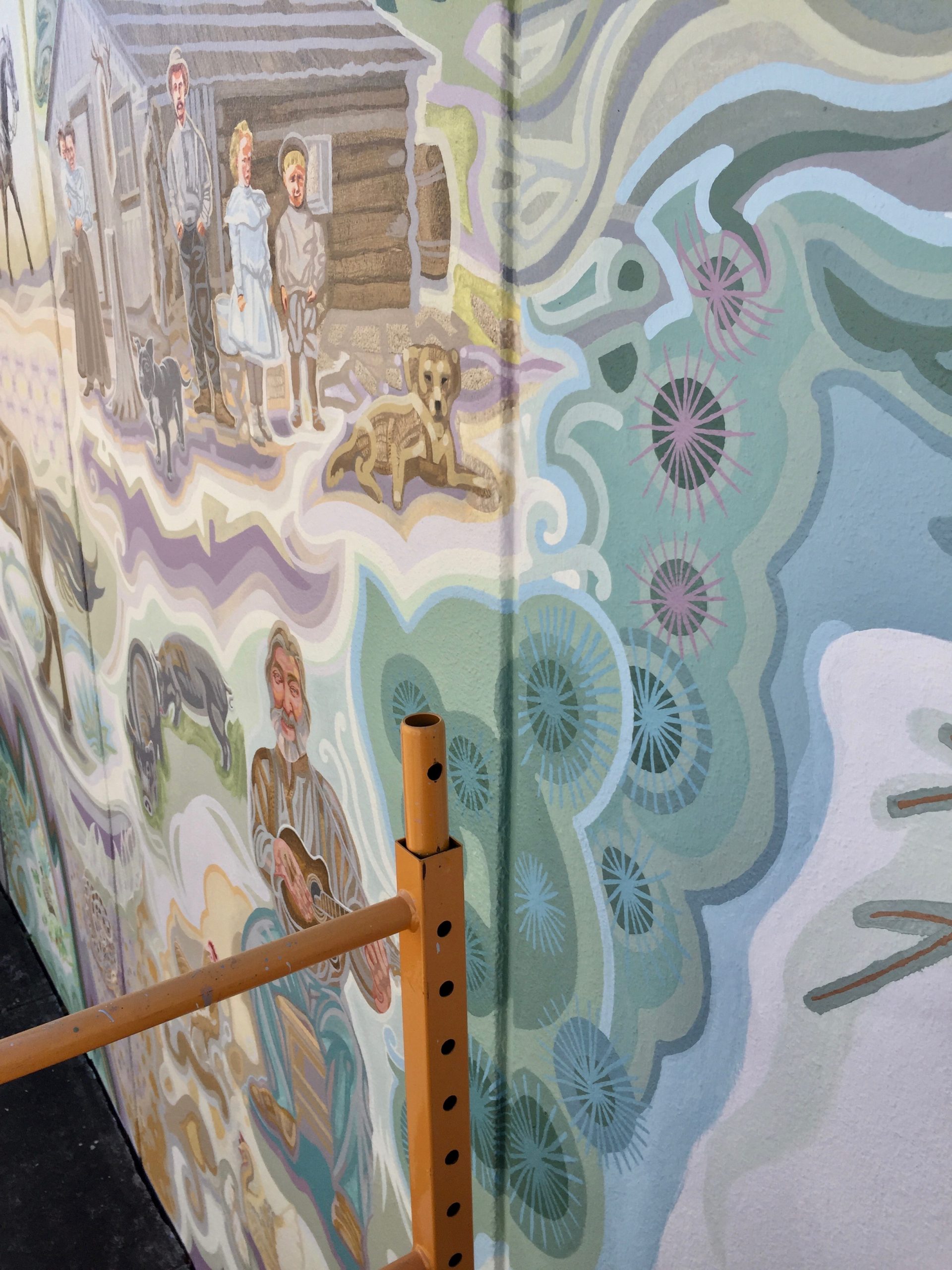
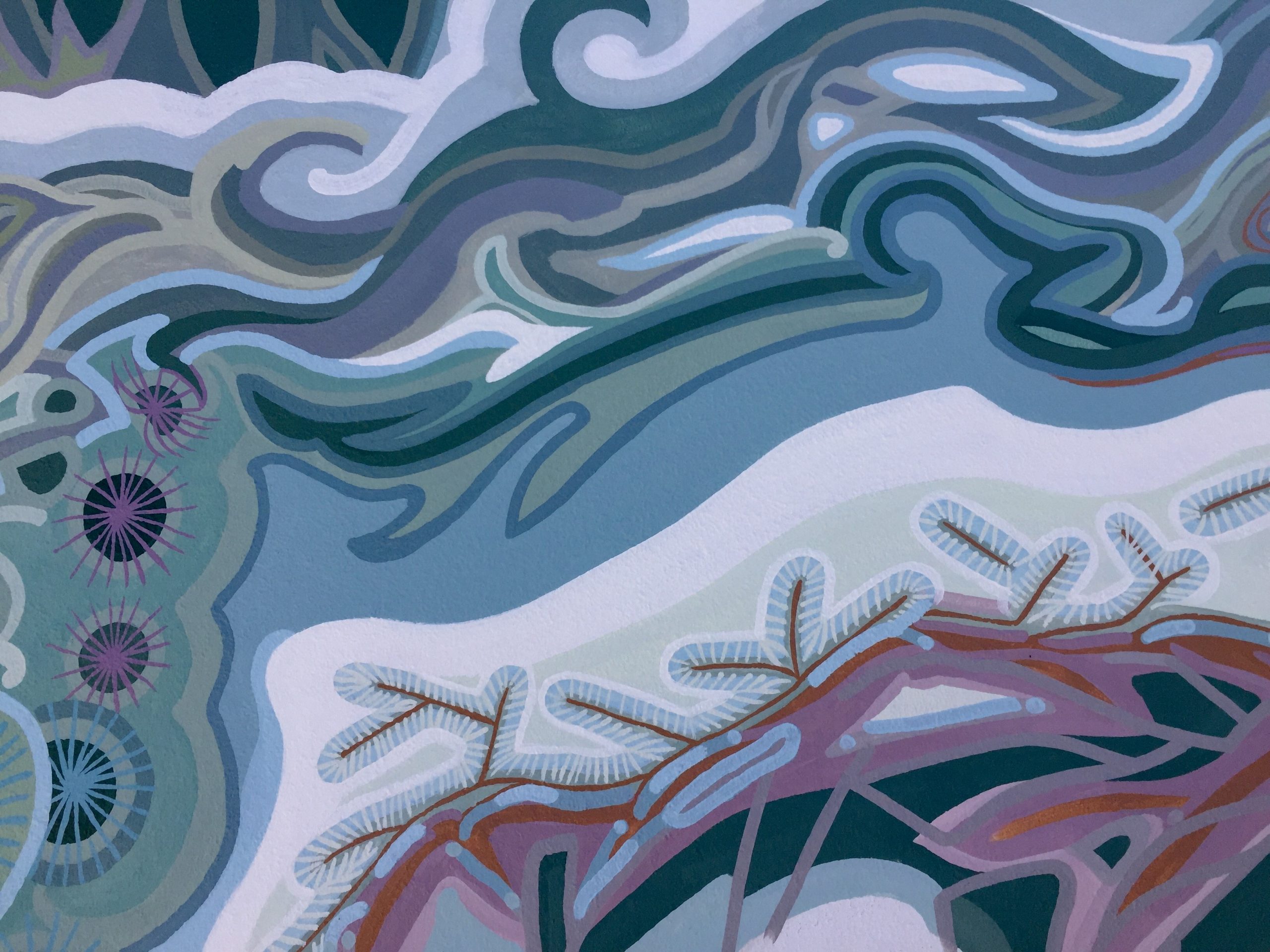
A settler’s life wasn’t easy and each family brought a little bit of a vibrant new community with them. They worked hard and lived well. But the harshest reality was that of the Natives, decimated by foreign disease, a changing environment they had less and less access to, deliberate persecution and sanctioned extermination. My challenge in this and the next panel was how to portray that?
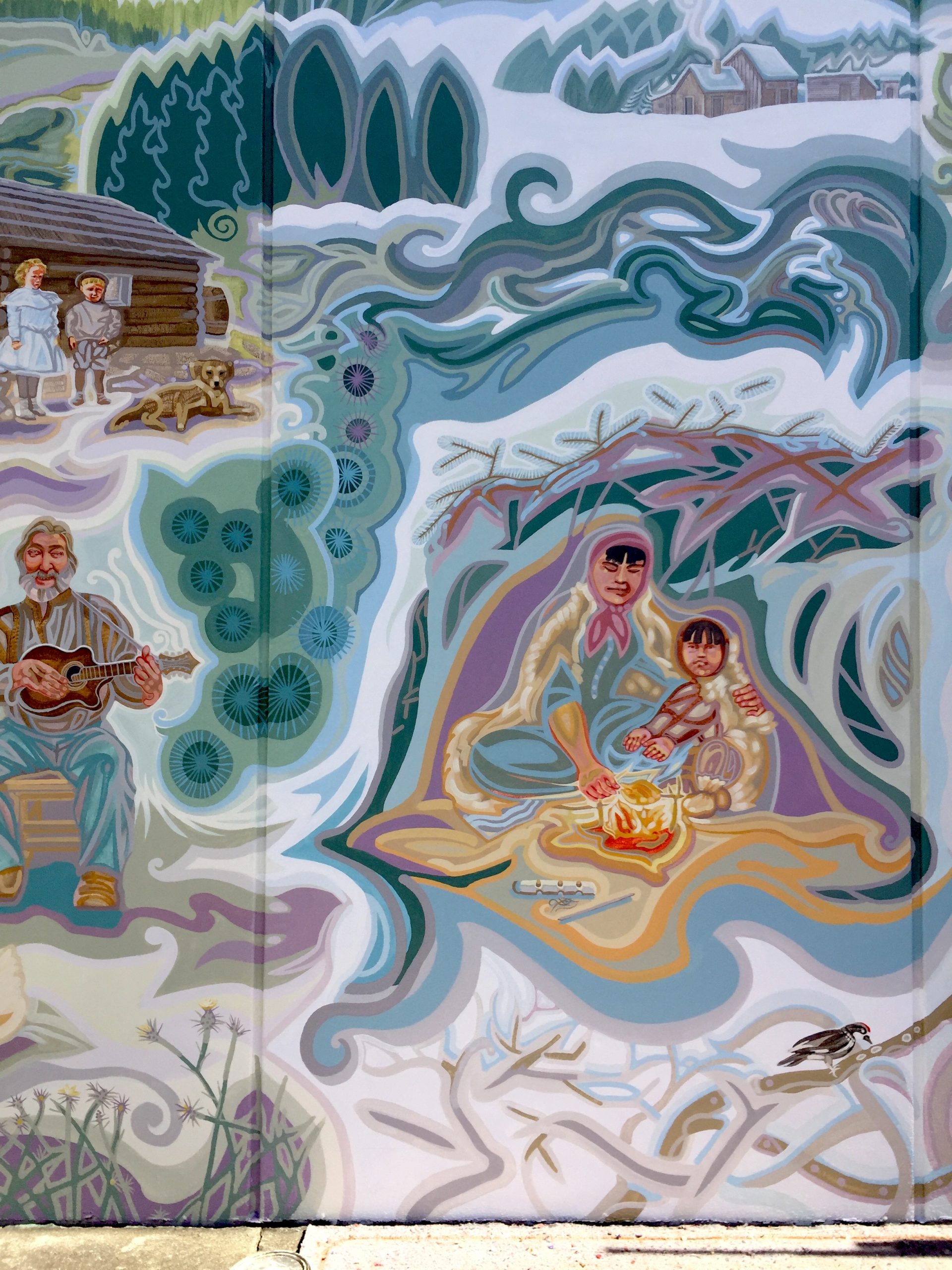
I chose to honor the strength and perseverance of the people with an iconic image of a mother and child.
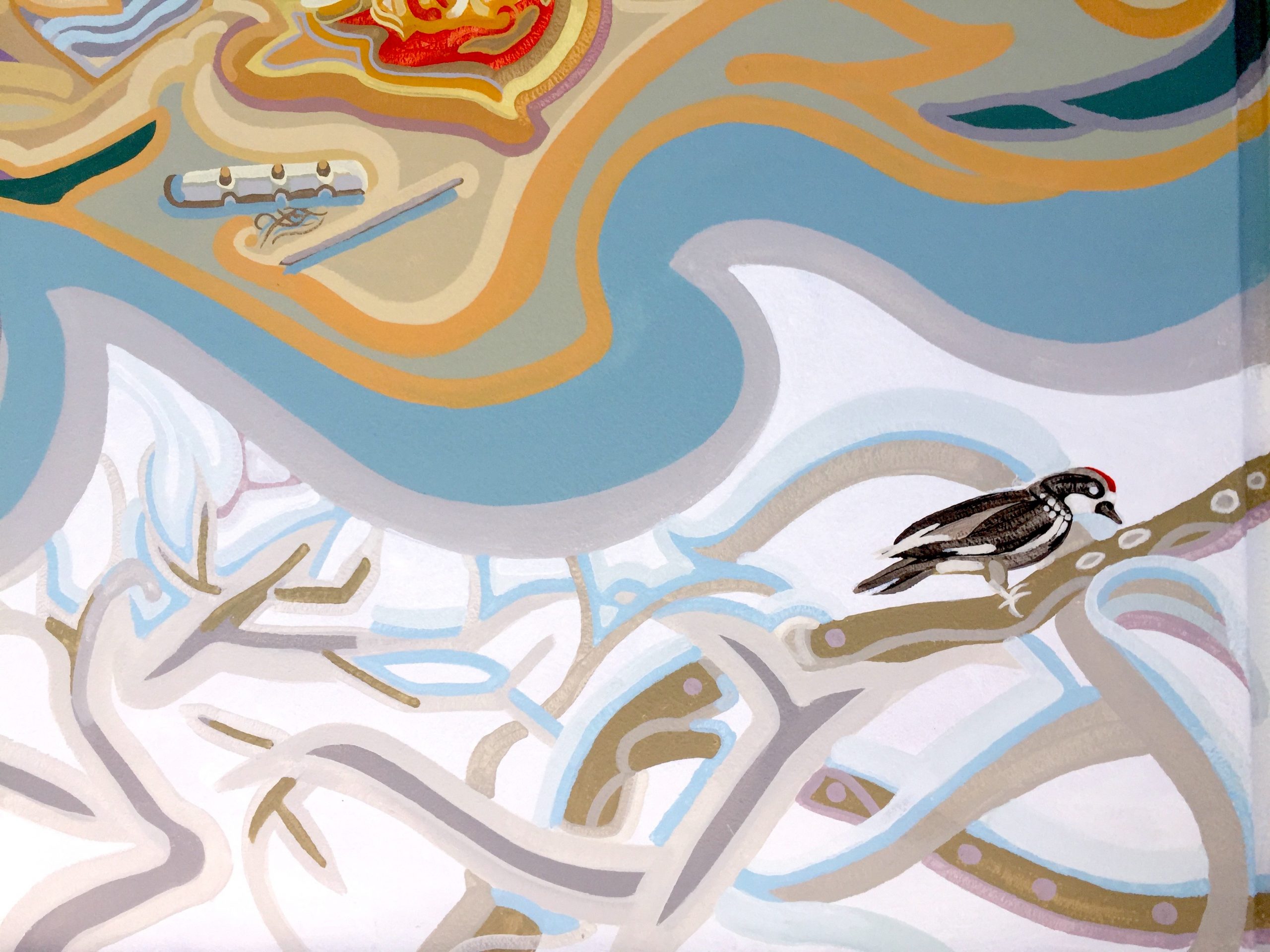
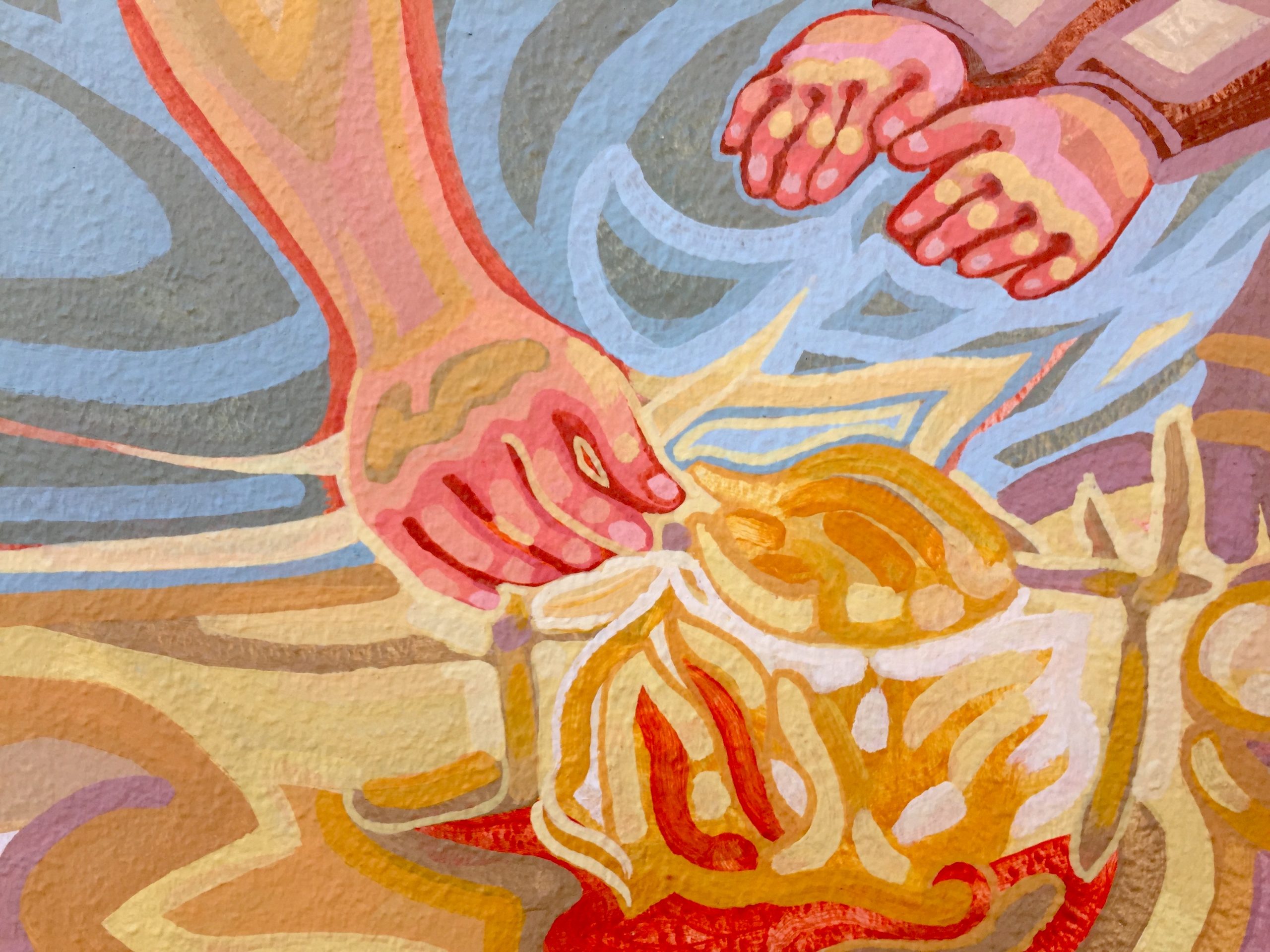
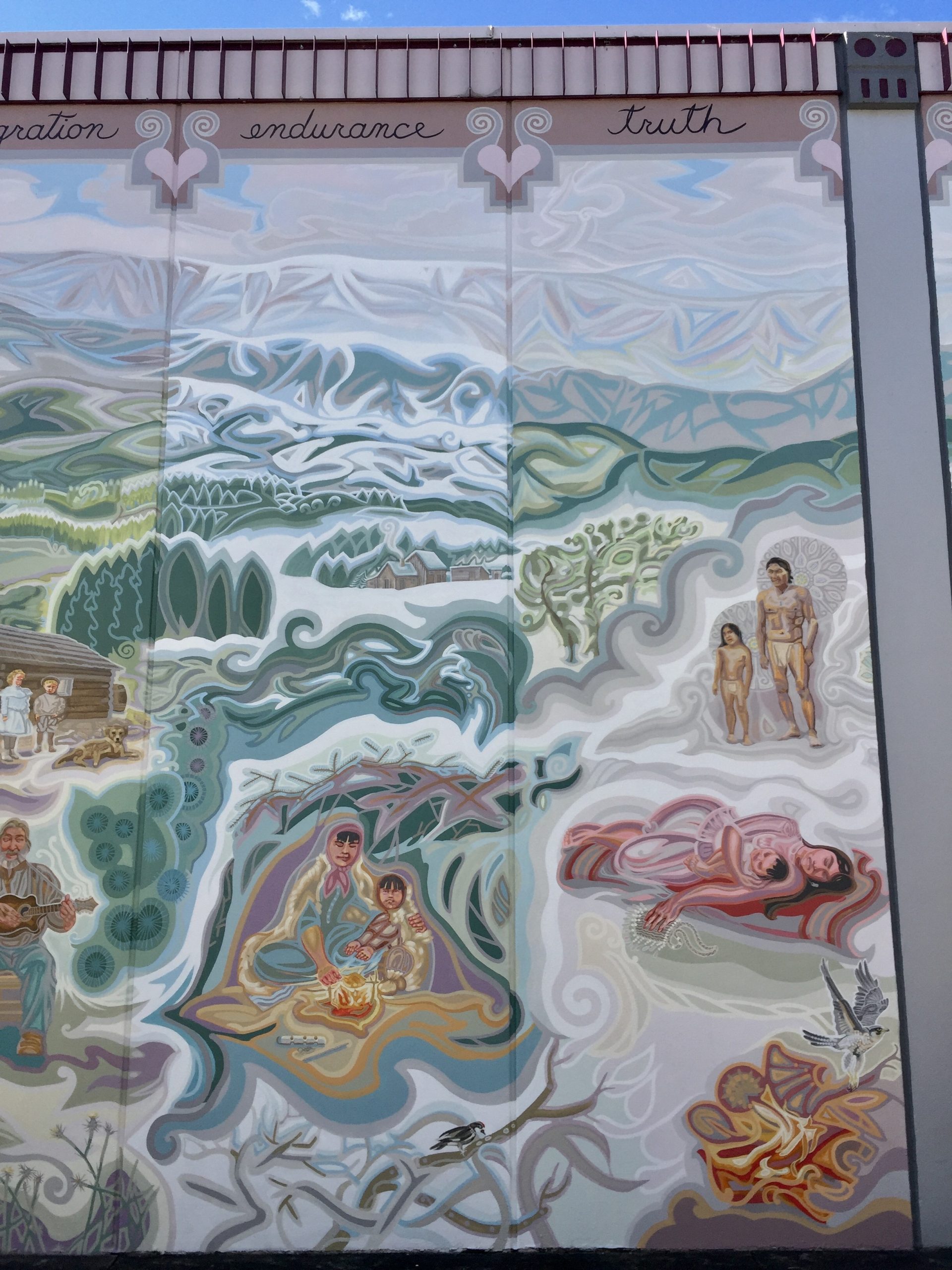
Find more about this haunting time on the panel page:
The subject of the endurance panel is intertwined with that of the next.
panel 9 truth
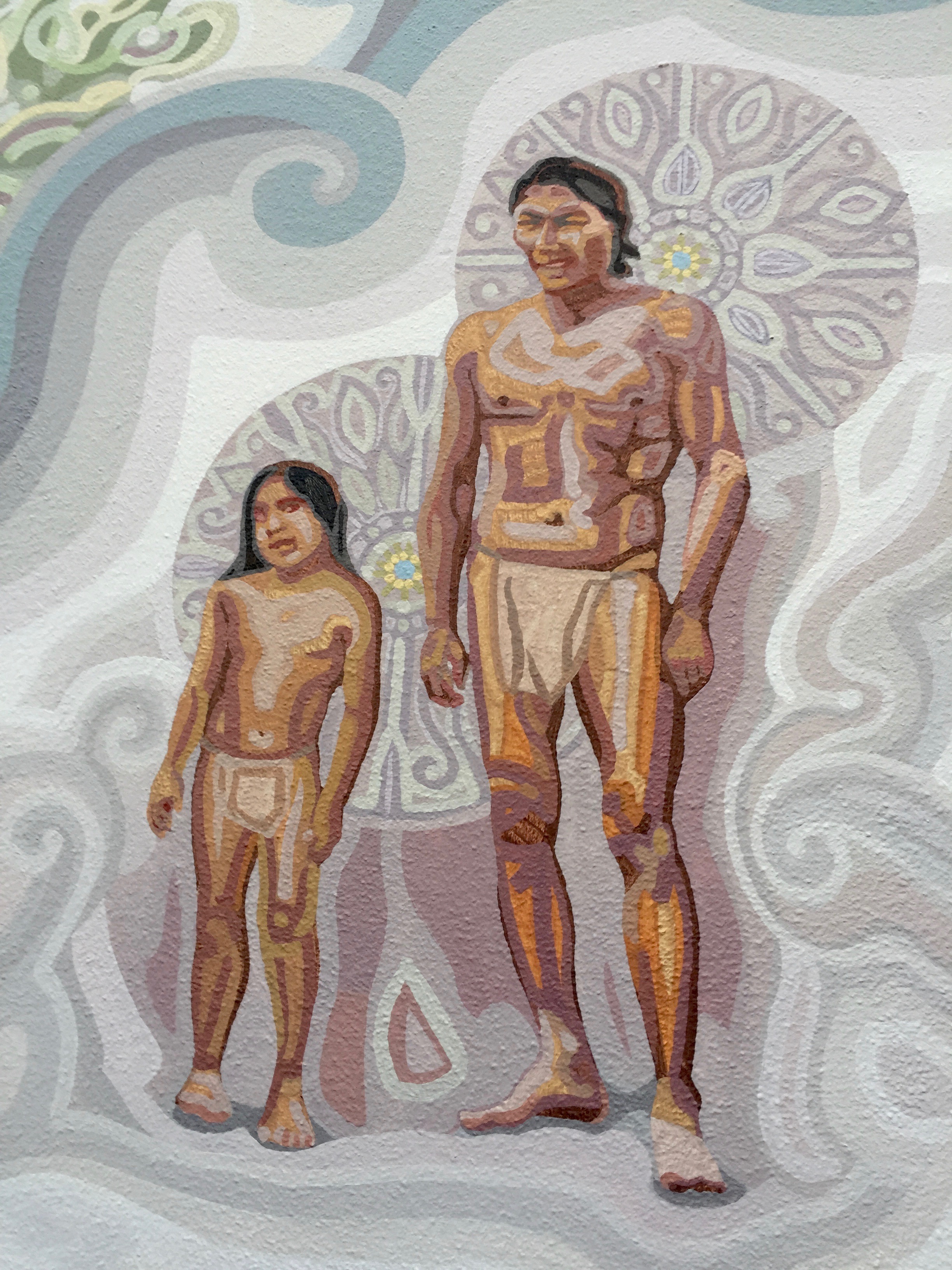
The word for this panel is truth.
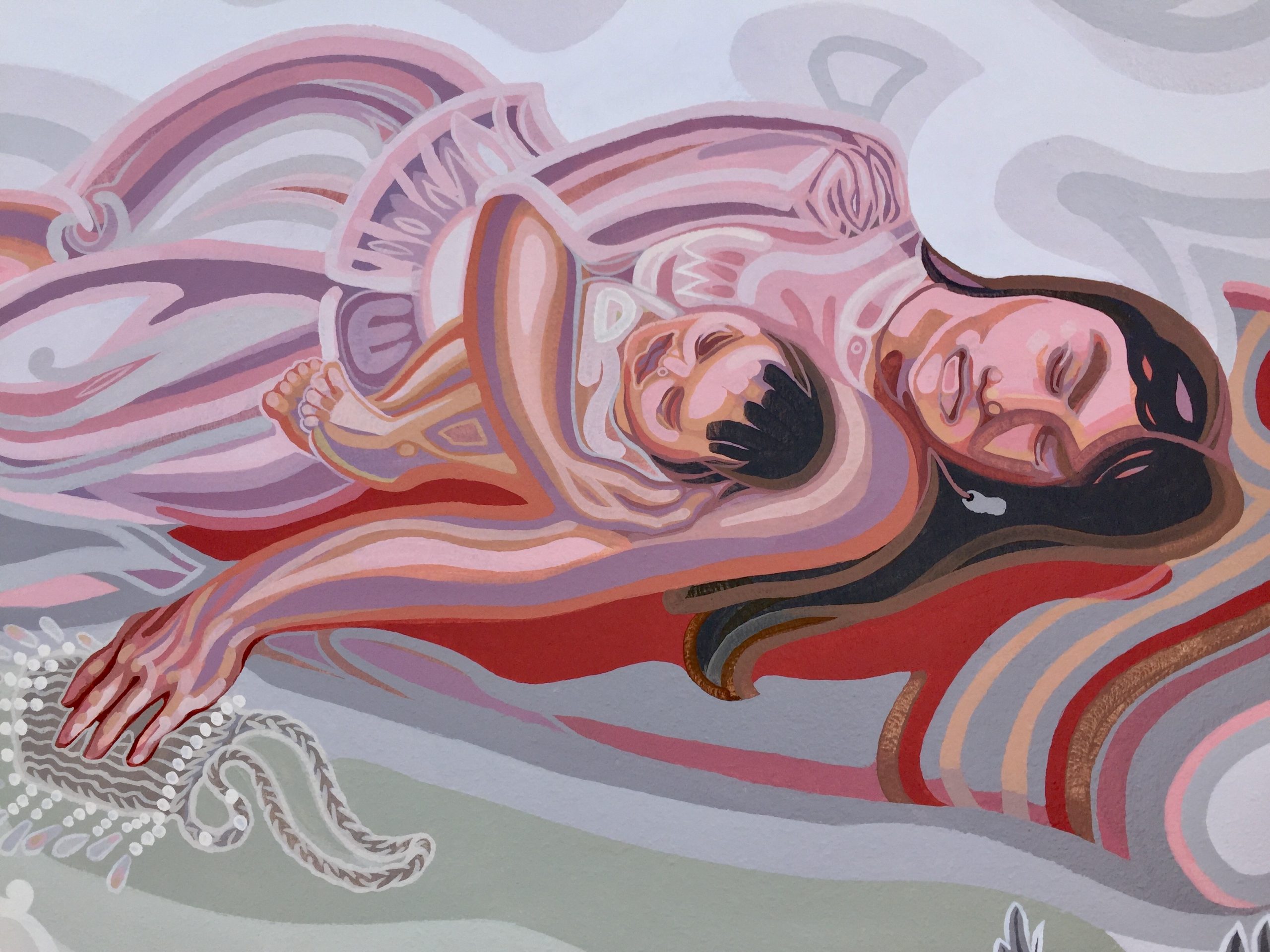
Without truth you cannot have honor.
Without acknowledgement, there can never be healing.
This is just one part of the big, vibrant mural, but it’s an essential part, and I worked hard to present it in terms of the courage, strength and dignity of the native people, rather than the depravity of the actions against them.

“Decency demands that even long after the deaths of the victims, we preserve the truth of what befell them, so that their memory can be honored…”
Quote from Benjamin Madley, author of An American Genocide: The United States and the California Indian Catastrophe, 1846-1873. In the Los Angeles Times, May 22, 2016.

The approach I took to depicting such a horrific subject was to counter it with the sheer beauty of the imagery, the soft colors, the sad peace of the mother’s beautiful face, the swirling shapes all around her.
Please see more on the panel page:
Previous…
SECTION ONE
Up Next…
SECTION THREE